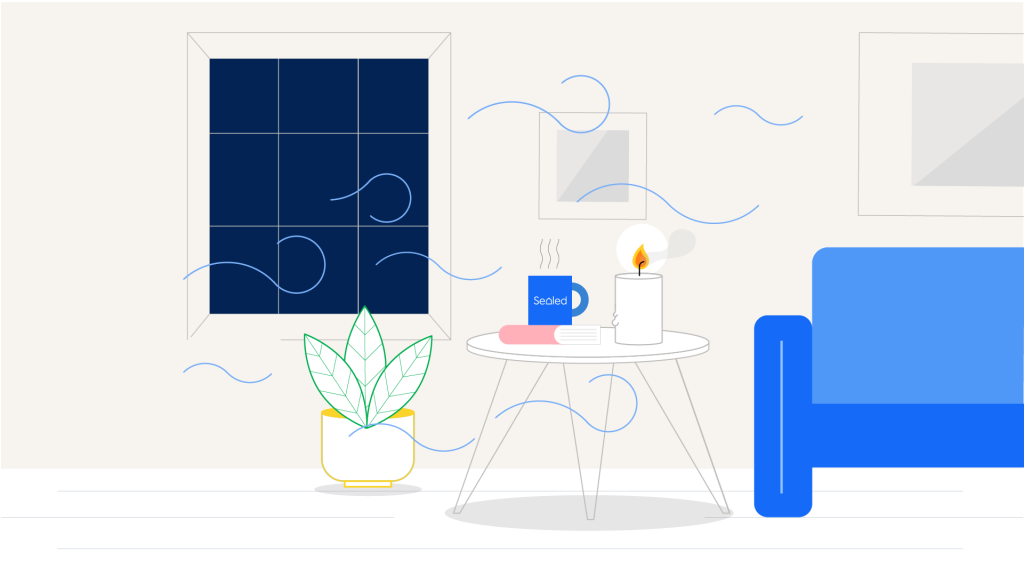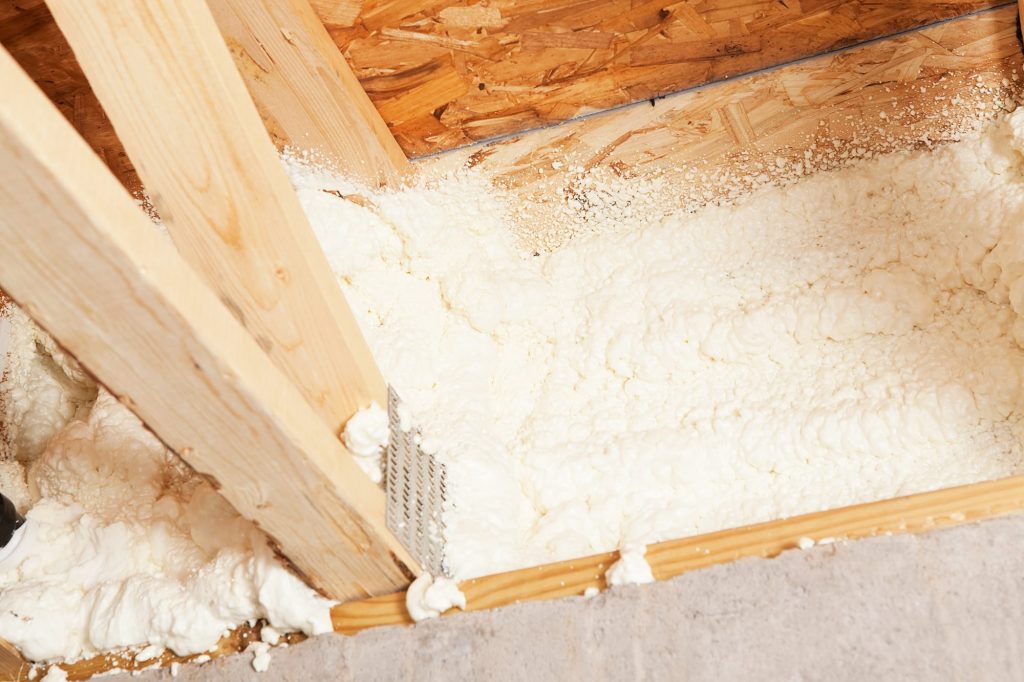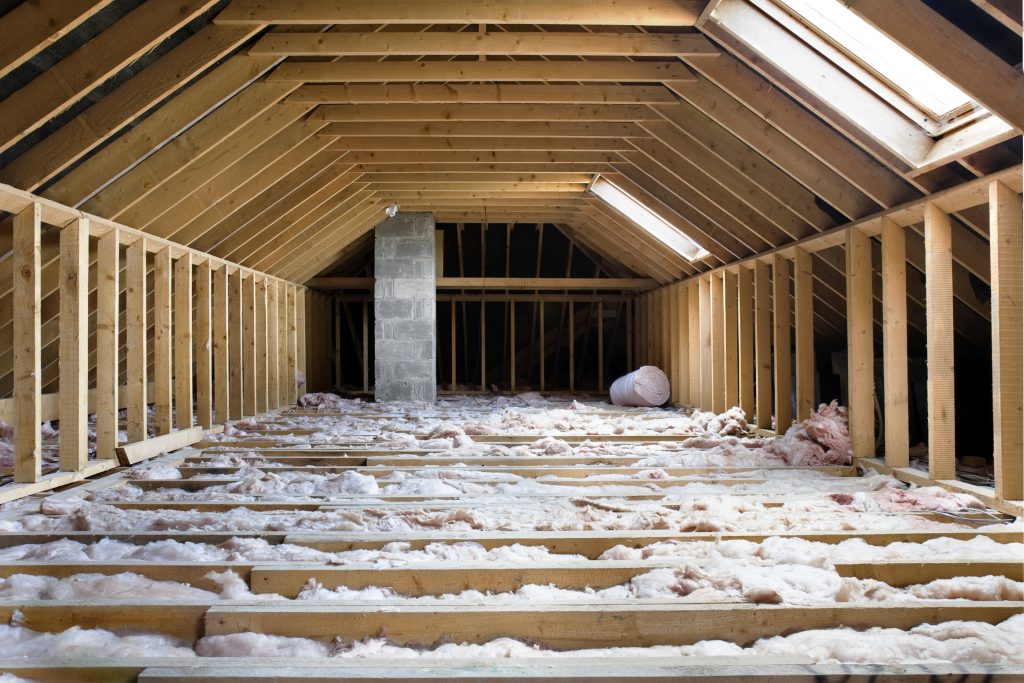Hearing things that go bump in the night? Getting goosebumps out of nowhere? Is your house haunted—or is something more sinister going on?
Have you ever felt that “sudden cold air” feeling that gives you goosebumps out of nowhere?
How do you know for sure if it’s just a cold draft—or if your house is actually haunted?
We’re home performance experts—we’re not the Ghostbusters, so we definitely recommend you call the right experts if you’re dealing with the paranormal (and that’s not us!).
But we’ll walk you through signs of a haunted house vs. a drafty house in this guide… and give you a spooky movie example, too.
Sudden cold air in room: Signs of ghosts vs. symptoms of a drafty house
Strangely enough, the signs of a haunted house and of a home that has ventilation and insulation issues are often the same.
Now, that’s creepy.
But what’s not creepy is that you could get whole-home weatherization upgrades (goodbye, drafts!) for $0 upfront if your house qualifies. Find out how.
Is your house haunted? Standard signs of ghosts in older homes
First things first: If you think your house is haunted, trust your instincts and call your local Ghostbuster.
Safety first—always!
Common signs of ghosts:
- Feeling a wave of cold air come over you
- Seeing unexplained movement out of the corner of your eye
- Strange sounds
- Lights flickering and electronics turning on and off on their own
- Difficulty sleeping and strange dreams
- Doors opening on their own
- Waves of dread
Let’s dig into each symptom.
1. You feel a wave of cold air come over you
If you’re minding your own business and an out-of-nowhere paranormal wind blows through your home, it’s likely your house is haunted.
Check and see if any fans are on, but overall, you shouldn’t have gust-like winds blowing through the inside of your house.
2. You’re seeing unexplained movements out of the corner of your eye.
We’ve heard spirits move fast and unpredictably (and that they also don’t like their photo taken).
If things are moving around on their own in your house, it’s time to call your friendly neighborhood paranormal investigator.
3. You hear strange sounds without a source.
Is howling coming from your basement—and you don’t have a dog down there?
We suggest evacuating your haunted house immediately. Let’s not take any chances.
4. Your lights flicker and electronics are turning on and off on their own.
Have you lost power—while every neighbor on your street still has electricity? It’s likely a sign of a spirit messing with the energies in your home and attempting to communicate with the living (or a tripped breaker box).
5. You’re having difficulty sleeping and strange dreams.
Forget that cup of coffee you had at 4 p.m. as the primary cause of your tossing and turning.
If you’re regularly having ominous dreams and spooky sleeping issues, your house could be haunted.
6. Your doors and cabinets open on their own.
Again, someone—or some thing—is trying to get your attention here.
(Or could it be a moisture issue? It’s probably a moisture issue. But more on that in the next section.)
7. You’re regularly experiencing waves of dread.
If a wave of dread washes over you out of nowhere, it could be due to activity in the ghostly realms of your home.
Again, call the Ghostbusters here. They’ll know what to do.
Is it cold air drafts? Indicators of insulation and air sealing needs in houses
Rest assured… your house might not be haunted by ghosts—even if the above symptoms have shown up in your home.
Many of the same issues that plague a haunted house apply to most homes that have draft and air movement issues.
A drafty house is caused by insufficient insulation, air leaks, and even HVAC problems in your home.

Key symptoms of a drafty, inefficient house include:
- Feeling sudden cold air in the room
- Hearing strange sounds from your heating and cooling systems
- Difficulty sleeping, including tossing and turning
- Lights flickering and electrical issues
- Doors and cabinets opening on their own without explanation
- A sense of anxiety, stress, or discomfort
Sound similar to the “signs of ghosts” list above? We thought so.
Let’s dig in to each of these symptoms from a building science perspective.
1. Feeling sudden cold air in the room.
Drafts are caused by something called the stack effect, which is how air moves throughout your home.
Your home is filled with air leaks (most are!) and they take in cool air from outside as heat rises in your house through the attic.
This can cause your home to feel too chilly and uncomfortable in the winter months and too stuffy, hot, and humid in the summer.
Learn how to find air leaks here.
2. Hearing strange sounds from your heating and cooling systems.
Have you been cranking up the heat in winter and blasting your AC in summer to try to stay comfortable?
A lack of sufficient insulation (paired with air leaks throughout your home) can cause you to wear out your HVAC system… and quickly.
So it makes sense your heater and AC make some spooky noises as they yell out in exhaustion.

3. Difficulty sleeping, including tossing and turning.
Did you know that uncomfortable bedroom temperatures can increase nightmares and night terrors in children? (1)
If your home is hard to keep cool on the hottest summer nights, it’s likely the children in your home are having night terrors due to an uncomfortable house—not due to a haunting.
And the same goes for adults, too—cold weather can even lead to insomnia (2).
4. Lights flickering and electrical issues.
This symptom goes back to HVAC system overwork caused by insufficient insulation and problematic air leaks throughout your home.
Heating and cooling your house accounts for up to 51% of your home’s energy consumption (3)—so if your furnace is short-cycling or AC is running all the time attempting to keep you comfortable, it’s going to put a strain on your home’s electrical systems as well.
5. Doors and cabinets opening on their own.
This isn’t just a symptom of spiritual activity; it’s also caused by fluctuations in the moisture levels in your home.
Due of the stack effect, you can have a too humid house in summer or too much dry air in winter.
But the right insulation improvements, professional air sealing, and HVAC upgrades can help solve excess moisture in a house.
6. A sense of anxiety, stress, or discomfort.
A comfortable home is a happy home…
And a house that’s uncomfortable due to uneven temperatures throughout the year can increase mental health concerns (4).
So it might not be ghostly inhabitants causing your sense of dread or increased anxiety… it literally might be your house.
A real creepy example: How to fix the scary (and drafty) The Amityville Horror movie house
Let’s take a look at a famous spooky house… one that has both problems going on: paranormal activity plus uncomfortable, uneven temperatures found in older, drafty houses.
Here are a few essential facts about this home:
- Decade built: 1920s
- Architectural style: Dutch Colonial with gambrel roof
- Local climate: The house where the original movie was filmed experiences warm, humid summers and winters tend to be snowy and cold. The temperature typically varies from 26°F to 82°F.
- Ghostly story: While this house is at the center of a classic book and scary film, unfortunately, it’s also has a real horror story. In 1974, the DeFeo family was murdered in this home. In 1975, the Lutz family bought this house and evacuated the home after 28 days due to paranormal activity. These stories were the subject for the book The Amityville Horror by Jay Anson, published in 1977, and used for the basis of the film and additional books.*
Our team’s recommendations for this spooky-movie home
To mitigate the paranormal activity—and the drafts and uneven temperatures, of course—the Sealed building science team recommends the following energy-efficient home improvements.
1. Insulate and air seal the attic.
In the movie The Amityville Horror, the attic of the home is finished with thin boards—and you can see hundreds of gaps between them.
These gaps allow for heat to escape in the winter straight out the roof—which creates a strong stack effect and moving air currents (aka, drafts) throughout the house.
2. Insulate and air seal the unfinished basement room.
If you’re watching this movie during spooky season, pay close attention to the basement.
If you look really closely, you might notice there’s no air sealing or insulation around the rim joist (which is the top perimeter of the basement wall).
This allows paid-for heat from the boiler to easily pass through uninsulated walls and bypass the whole house on its way to the attic—like heat going straight up and out a chimney.
And in the film, this house is also on the water, so those movie characters surely have some moisture issues going on in that basement. Air sealing and insulating the rim joist and foundation can help reduce any humidity intake.

3. Insulate the walls using dense-packed cellulose.
Due to the decade in which the Amityville Horror movie house was constructed, it’s unlikely insulation was added in the walls.
That means cold air (and ghosts) could easily move in the walls between the basement and the attic, circulating cold air drafts throughout the home and causing heat loss.
Our recommendation? Dense-pack those walls with cellulose insulation—which also includes boric acid to repel many types of creepy critters from hanging out in your walls.
In addition, the wooden floors of the movie house would have shrunk over time as they dried out over the years.
This can cause scary squeaks as you walk around the house from the film, waking up people (and spirits) in the middle of the night. And it also can cause cold floors, too.
But upgrading the insulation throughout any house—including the walls—can help remedy squeaky-floor wake-ups by dampening the noise between rooms and floors. And keep your feet warmer.

4. Air seal and insulate any hidden spaces.
Dutch colonials, like The Amityville Horror movie house, usually have knee wall areas. Knee walls are the the shorter “half-height” walls found in finished attic spaces in Dutch colonial-style homes.
These knee walls—and any attics behind them—should be air sealed so any spirits hiding within can’t get into the house… and this keeps out cold air drafts, too.
And all that being said, for this infamous scary movie house in particular, we’d also recommend hiring a contractor that has Building Performance Institute (BPI) certifications in exorcism, just in case.
(We’re kidding. That’s not really a thing… that we know of, anyway.)
Get rid of the spooks and increase your comfort year round with home upgrades from Sealed
Haunted houses are no joke (although this article definitely is).
But drafty, uncomfortable, energy-inefficient houses aren’t funny either.
Did you know that drafty, inefficient homes can be fixed?
And when your house is uncomfortable, it’s also a sign it’s wasting energy. That’s money you’re throwing away on not feeling any better in your own home.
At Sealed, we’re on a mission to make houses feel better, be healthier, and waste less energy. And we can help you do just that—for no upfront cost. Learn how.
And if your home qualifies to work with Sealed, you can get high-performance insulation upgrades, professional air sealing, or super-efficient heat pump HVAC that will make you home feel better year round.
(Say goodbye to ghostly drafts and uncomfortable, sleepless nights!)
Complete our quick questionnaire to see if your house qualifies for a home comfort makeover with Sealed.
*It’s important to note, Sealed found in our research that this famous house has been lived in and loved by new owners for some time. We’re basing this lighthearted article on its book and film representations of this house alone.
Love energy efficiency deep-dives on older houses? Check out the following: